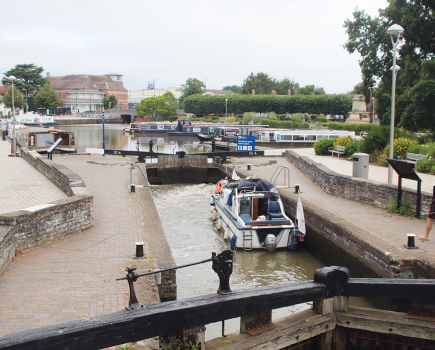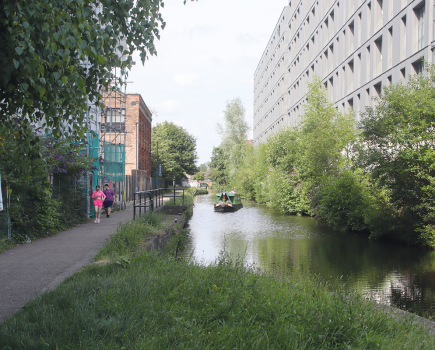Do Scotland’s canals represent good value for the public money that is put into them?
Do Scotland’s canals represent good value for the public money that is put into them? Two contrasting exercises would initially appear to give opposite answers to this question, especially when it comes to the Lowland Canals. On the one hand they come nowhere near covering their maintenance costs from the money they raise. But on the other hand, their restoration and reopening has generated investment out of all proportion to the money spent on reviving them from dereliction.
The Forth & Clyde and Union canals were restored and connected together by the revolutionary new Falkirk Wheel boat lift in 2002, reopening routes between Glasgow, Edinburgh and the east and west coasts of Scotland. But following the buildup of a backlog of maintenance as a result of funding falling behind what would be necessary to maintain them in good condition, the canals reached the point two years ago where they appeared to be falling back into dereliction. Indefinite stoppages on safety grounds including four swingbridge and liftbridge closures (with no sign of where the funds to repair them would come from) were reducing them to a series of disconnected lengths of canal. Waterways organisations worked together to raise awareness of the issues, and the Scottish Government stepped in with three separate tranches of extra cash, enabling the routes to reopen in spring 2019.
But in the meantime, a report commissioned by Scottish Canals had raised the possibility that parts of the network would be abandoned as navigations. And while the influx of money was very welcome, SC questions the viability of a system where the Lowland Canals cost £2.1m in annual maintenance, but income from boating at just over £100,000 per year only covers around 5 percent of this with the rest met largely by grants from the Scottish Government. By comparison in England and Wales the Canal & River Trust raises very roughly similar proportions of its total income from each of its three main sources: boating, Government funding, and its sizeable commercial property portfolio.
But at the same time, a recent report shows that since 2002 the revived Scottish canals have generated over £1.5 billion – that’s well over 20 times what they cost to restore – in extra investment in infrastructure, tourism and regeneration including thousands of new homes and jobs in the waterside corridors. And the pace is accelerating. Of course that isn’t money going into SC or directly into the canals, but it’s going into Scotland’s economy.
Does it justify the cost of keeping the canals open? Michael Matheson, Cabinet Secretary for Transport, Infrastructure and Connectivity, would appear to believe so: “To secure the future of the network, we increased Scottish Canals funding to record levels in the budget for 2019/20, in recognition of the challenges faced in maintaining our historic waterways – but also with the knowledge about what our canals have already delivered for Scotland and will continue to do so in the years ahead.” And Catherine Topley, SC Chief Executive, added that the report demonstrated that the canals were important in meeting 21st century challenges, “whether it is helping tackle climate change and health inequalities or delivering against the Government’s agenda for new homes, jobs and tourist spend”.
Even so, SC maintains that as far as boating on the Lowland Canals is concerned “it is no longer financially viable to continue providing on-demand access to services all day, seven days per week”, and that “We have to change in order to become more sustainable.” As a result, a consultation has been launched which asks boaters their views on proposals including: introduction of user or remote operation of bridges and locks (currently staffed), availability of boater services, weed control and dredging, canal opening times and online booking.
Following the consultation the results will be announced in January with a view to final proposals being introduced from 1 April. See scottishcanals.co.uk/lowland-operations-consultation to take part in the consultation.







